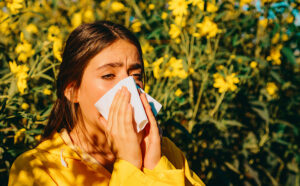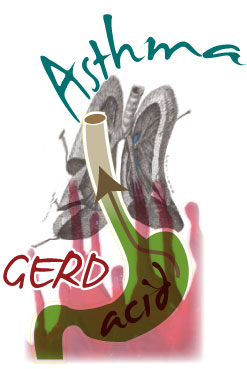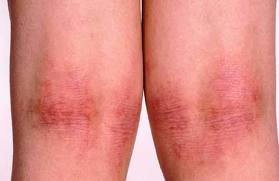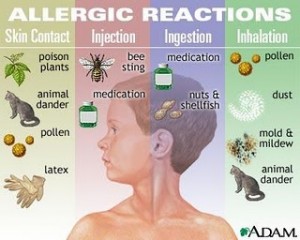On April 6, 2018 CNN published an article about asthma in adults. It was called “Developing Severe Asthma in Adulthood”.
Asthma in adults occurs with a frequency of about 2.3 per 1000 people per year. This publication also noted that women suffer from this condition more often than men. For both sexes the occurrence of asthma in adults peaks at 35 years of age.
Symptoms of asthma
The triggering factors for asthma can be infections, allergies, or the condition can come on spontaneously. Coughing is one of the main symptoms. You may be breathless when walking stairs. You may feel weak or tired when exercising. After exercise you may be wheezing or coughing. If you measure your breathing capacity with a peak flow meter, the values are lower than normal. Cold air or irritants like cigarette smoke may trigger coughing or wheezing. In industrial workers the trigger for asthma can be noxious fumes.
Diagnosis of asthma
Spirometry
Your doctor likely will order a test, called spirometry. You are breathing into a tube with a connection to a spirometer. A technician will instruct you to breathe out to the max (maximal exhalation). Next you will have to breathe in as quickly as you can. These breathing activities translate into a breathing curve on the read-out of the spirometer. With asthma there is a certain degree of restriction of airflow due to spasms in the smaller bronchial tubes, called bronchioles. This will be obvious from the breathing pattern of the spirometry read-out.
Methacholine challenge test
When the spirometry test is normal or near normal, a Methacholine challenge test can be another diagnostic tool. If this produces an asthma attack, it is clear that the person does indeed have asthma.
Measuring nitric oxide in your breath
Our bodies normally produce nitric oxide, and a small amount of it appears in your breath. But if there is a large amount of it present in your breath, it indicates chronic inflammation in your airways, which can be one of the causes of asthma.
Other tests to rule out other related diseases
Your doctor may want to order sinus x-rays to rule out sinusitis or a chest X-ray to rule out pneumonia. If he suspects allergies a referral to an allergist sill be next. The specialist will do skin prick tests to see what you are reacting to.
Differential diagnosis of asthma and other diseases
When the physician is thinking about an asthma diagnosis, it will be necessary to exclude other diseases first. It is important to exclude a bronchial or lung infection as well as the presence of emphysema or chronic obstructive pulmonary disease (COPD). Clots in the pulmonary vasculature (pulmonary emboli) have to be ruled out. When there is a history of gastroesophageal reflux, tests should exclude that there is aspirated gastric contents into the lung. Another condition that could bring on wheezing is chronic congestive heart failure, where the heart fails to pump enough blood, and shortness of breath is a consequence. Tests are available to exclude all of these conditions.
Treatment of asthma in adults
Anti-inflammatory medication
As all patients with asthma have inflammation in the airways, it is important to use corticosteroid inhalers that will control this. These inhalers will control the swelling and mucous production in the lining of the bronchial tubes. With the daily use of these inhalers the airflow improves, the airways become less sensitive and the patient experiences fewer asthma episodes.
Bronchodilators
Bronchodilators are inhalers that will relax the muscle bands around the bronchial tubes. This allows the patient to breather easier. The mucous flows more freely and can be coughed up easier. There are short-acting and long-acting forms of bronchodilators. Your physician will instruct you which one to use.
Conclusion
Adult onset asthma is separate from asthma of childhood. Often the triggers are allergies or irritants, including industrial irritants. With a proper diagnosis and treatment adult asthmatics have a normal life expectancy. It is important to control the inflammation of the airways with anti-inflammatory corticosteroid inhalers. For acute asthma attacks a bronchodilator must be used right away to ensure normal airflow is restored. The patient learns how to modify the asthma therapy. As a result there are very few occasions where the patient would need treatment in a hospital. Most patients can treat an asthma attack quickly and they respond very well to the treatment. As a result adult asthmatics can lead active lives and have no physical limitations.















